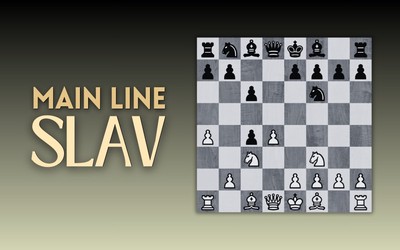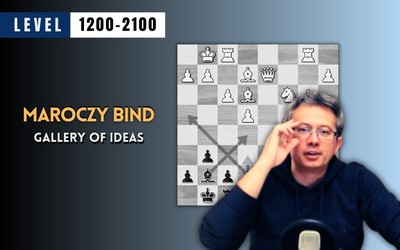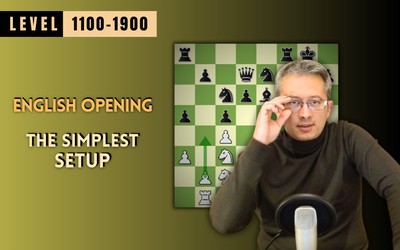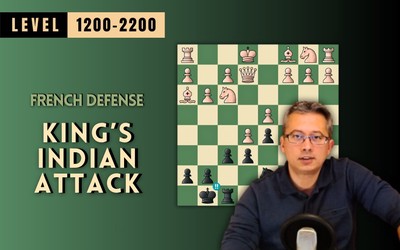
Aleksandar Randjelovic
Steinitz French for Black
A simple idea to use when facing Steinitz variation of the French!The first step in preparing the Steinitz variation, whether playing as White or Black, is to examine the best model games. Among these, the match played between Steinitz himself as White and Alexander Sellman as Black is arguably the most instructive.
And that's how I start my newest Youtube video on the Steinitz French.
The pawn structure that arises from that game is characteristic of the variation, with the endgame typically favoring White (which is not the case in majority of the French defense variations). White often secures a strong knight outpost on d4, while the d3-pawn remains behind and defends c4 and e4 squares. Black, on the other side, is kept with their bad light-square bishop, and can't do a lot to improve it.
The endgame should be well-known in order to understand one of the main ideas for White, and try to avoid getting into it as Black.
The primary strategy for Black in the Steinitz variation of the French involves exchanging the light-square bishop by maneuvering it to a6 (previously advancing a6, b5, b4 and a5), with a potential initiative on the queenside, thanks to the space advantage.
The queenside pawn-storm also discourages White from castling long, whereas castling kingside doesn't present as much of a threat to Black.
In certain lines, Black's d7-knight has the opportunity to occupy the e4 outpost, often via c5. This scenario arises when White chooses to exchange their d3-bishop for Black's bishop on a6, rather than waiting for Black to initiate the trade on d3.
Lastly, there is the possibility for Black to advance g7-g5, an unusual, but at the highest levels not that rarely seen idea - to deflect the only supporter of the central e5-pawn (the f4-pawn).
You'll notice that I'm not delving deeply into specific opening lines. This is because I don't consider it valuable, particularly for players rated under 2000 FIDE. The ideas presented here, while basic, should suffice for building your experience without risking being caught in the opening phase, as they provide a clear direction of thought. Further study may not be necessary unless you're preparing to face master-level opponents.
Feel free to check the whole video lesson, and if you want to support my effort, leave a comment.
More blog posts by mizant83

Main Line Slav Defense (Dutch variation)
Quick guide to the main line of the Slav defense! (video)
Maroczy Bind - Gallery of Ideas
How to understand Maroczy Bind pawn formation?
Quick guide to the English opening
The simplest and most obvious setup in the English opening for White
